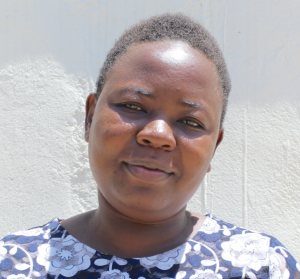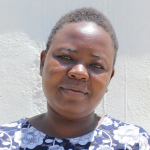Shitsava Primary School was started in the year 2010. It is located in Shitsava Village of Kakamega County, Kenya. The school has a total population of 450, 180 boys and 270 girls. The school employs 12 teachers and two support staff.
A teacher arrives at the school by 6am to greet students and delegate the morning's cleaning chores. If there is no water at the tap, students are contacted ahead of time to bring their own containers full of water from home. Normal classes begin at 8am and go until 5pm.
Water
There is no reliable source of water on school grounds because the piped water works only an average of two or three days a week. At times, pupils are forced to carry water from home. This water is from different sources; whatever was most convenient for them along the walk to school, whether dirty or clean. Students also have a chance to find more water during lunch since the school doesn't have a food program.
Numerous cases of water-related diseases have been reported in the school. The most commonly reported cases include diarrhea and typhoid. The school is in serious need of a reliable source of clean water.
Sanitation
The school sanitation situation also needs to be addressed. The school has a total of eight useable pit latrines. This means that one toilet serves more than 50 pupils, which is far below the requirement of the World Health Organization. There are long waits for a turn at the latrines, especially during class break.
The school has no handwashing facilities for either staff or students.
"The situation in our school has always been wanting since the sanitation facilities are not enough. Pupils waste a lot of time queuing so as to use the facilities. Thanks for being concern about our pupils' health," teacher Catherine Amwayi told us.
Training
Training will be held for two days. The facilitator will use PHAST (participatory hygiene and sanitation transformation), ABCD (asset-based community development), CTC (child to child), lectures, group discussions, and handouts to teach health topics and ways to promote good practices within the school. The CTC method will prepare students to lead other students into healthy habits, as well as kickstart a CTC club for the school. This CTC club will oversee the new facilities, such as handwashing stations, and make sure they are kept clean and in working condition.
Handwashing
The two handwashing stations will be delivered to the school, and the club will fill them with water on a daily basis and make sure there is always a cleaning agent such as soap or ash.
VIP Latrines
Two triple-door latrines will be constructed with local materials that the school will help gather. Three doors will serve the girls while the other three serve the boys. And with a new source of water on school grounds, students and staff should have enough to keep these new latrines clean.
Rainwater Catchment Tank
A 50,000-liter rainwater catchment tank will help alleviate the water crisis at this school. The school will also help gather the needed materials such as sand, rocks, and water from the spring for mixing cement. Once finished, this tank can begin catching rainfall that will be used by the school’s students and staff. Students will no longer have carry water from home to supplement the unreliable source at school.
We and the school strongly believe that with this assistance, standards will significantly improve. These higher standards will translate to better academic performance.
This project is a part of our shared program with Western Water And Sanitation Forum (WEWASAFO). Our team is pleased to provide the reports for this project (edited for readability) thanks to the hard work of our friends in Kenya.

 Rainwater Catchment
Rainwater Catchment
 Rehabilitation Project
Rehabilitation Project

































